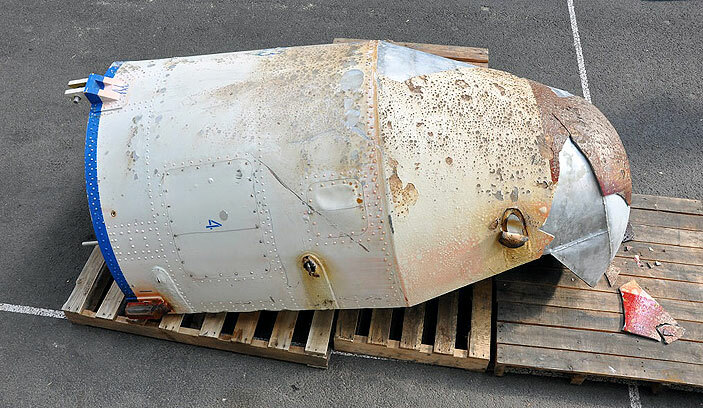N. Korea satellite 'in stable orbit but not seen transmitting'
Missile experts say North Korea appears to have repeated its earlier success in putting an object into space, rather than broken new ground.
WASHINGTON - North Korea's recently launched satellite has achieved stable orbit but is not believed to have transmitted data back to Earth, U.S. sources said of a launch that has so far failed to convince experts that Pyongyang has significantly advanced its rocket technology.
Sunday's launch of what North Korea said was an earth observation satellite angered the country's neighbors and the United States, which called it a missile test. It followed Pyongyang's fourth nuclear test in January.
"It's in a stable orbit now. They got the tumbling under control," a U.S. official said on Tuesday.
That is unlike the North's previous satellite, launched in 2012, which never stabilized, the official said. However, the new satellite was not thought to be transmitting, another source added.
 North Korean leader Kim Jong Un watches the long range rocket launched into the air. (Reuters/Yonhap)
North Korean leader Kim Jong Un watches the long range rocket launched into the air. (Reuters/Yonhap)
U.S. President Barack Obama spoke with the leaders of South Korea and Japan by phone on Monday night and reassured them of Washington's support, while also calling for a strong international response to the launch, the White House said.
Obama will also address North Korea's "provocations" when he hosts the leaders of the Association of Southeast Asian Nations in California early next week, aides said.
The United States and China, Pyongyang's only major ally, are negotiating the outline of a new U.N. sanctions resolution that diplomats hope will be adopted this month.
The U.N. Security Council has imposed sanctions against North Korea for its nuclear tests and long-range rocket launches dating back to 2006, banning arms trade and money flow that can fund the country's arms programme.
But a confidential U.N. report, seen by Reuters, concluded that North Korea continues to export ballistic-missile technology to the Middle East and ship arms and materiel to Africa in violation of U.N. restrictions.
 North Korea launched a long-range rocket on Sunday carrying what it has called a satellite. (Reuters/Yonhap)
North Korea launched a long-range rocket on Sunday carrying what it has called a satellite. (Reuters/Yonhap)
The report by the U.N. Security Council's Panel of Experts on North Korea, which monitors implementation of sanctions, said there were "serious questions about the efficacy of the current United Nations sanctions regime."
Western diplomats told Reuters that restricting North Korean access to international ports is among the measures Washington is pushing Beijing to accept in the wake of the Jan. 6 nuclear test and the weekend rocket launch.
'Provocative, disturbing and alarming'
Missile experts say North Korea appears to have repeated its earlier success in putting an object into space, rather than broken new ground. It used a nearly identical design to the 2012 launch and is probably years away from building a long-range nuclear missile, the experts said.
Vice Admiral James Syring, director of the U.S. Missile Defense Agency, told reporters that North Korea's launch was "provocative, disturbing and alarming," but could not be equated with a test of an intercontinental ballistic missile.
He said North Korea had never attempted to flight test the KN-08 intercontinental ballistic missile it is developing.
 North Korean leader Kim Jong Un (C) watches the rocket launch into space. (Reuters/Yonhap)
North Korean leader Kim Jong Un (C) watches the rocket launch into space. (Reuters/Yonhap)
 Here, Kim Jong Un reacts as he watches the rocket launch. (Reuters/Yonhap)
Here, Kim Jong Un reacts as he watches the rocket launch. (Reuters/Yonhap)
Syring said U.S. missile defenses would be able to defend against the new North Korean missile given efforts to improve the reliability of the U.S. system and increase in the number of ground-based U.S. interceptors from 30 to 44.
"I'm very confident that we're, one, ahead of it today, and that the funded improvements will keep us ahead of ... where it may be by 2020," he said.
The latest North Korea rocket was based on engines taken from its massive stockpile of mid-range missiles based on Soviet-era technology and electrical parts too rudimentary to be targeted by a global missile control regime, experts said.
South Korea's defense ministry believes the three-stage rocket, named Kwangmyongsong, had a potential range of 12,000 km (7,457 miles), Yonhap news agency reported, similar to that of the 2012 rocket and putting the U.S. mainland in reach.
"I suspect the aim of the launch was to repeat the success, which itself provides considerable engineering knowledge," said Michael Elleman, a missile expert at the International Institute for Strategic Studies.
 A metal object believed to be a part of North Korean long range rocket launched is seen in this undated picture. (Reuters/South Korean Defense Ministry/Yonhap)
A metal object believed to be a part of North Korean long range rocket launched is seen in this undated picture. (Reuters/South Korean Defense Ministry/Yonhap)
Separately, U.S. National Intelligence Director James Clapper said on Tuesday that North Korea could begin to recover plutonium from a restarted nuclear reactor within weeks.
Clapper said that in 2013, following its third nuclear test, the North had announced its intention to "refurbish and restart" facilities at its Yongbyon nuclear complex.
"We assess that North Korea has followed through on its announcement by expanding its Yongbyon enrichment facility and restarting the plutonium production reactor," Clapper said in prepared testimony to the Senate Armed Services Committee.